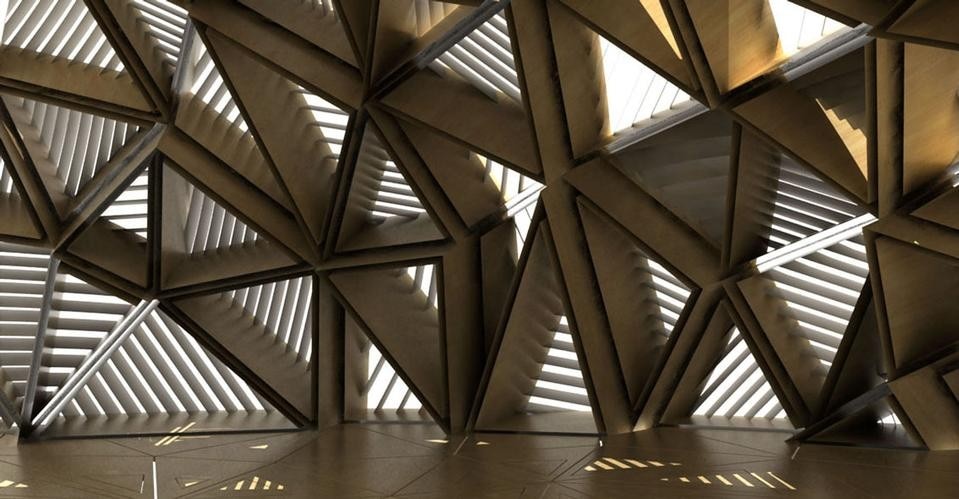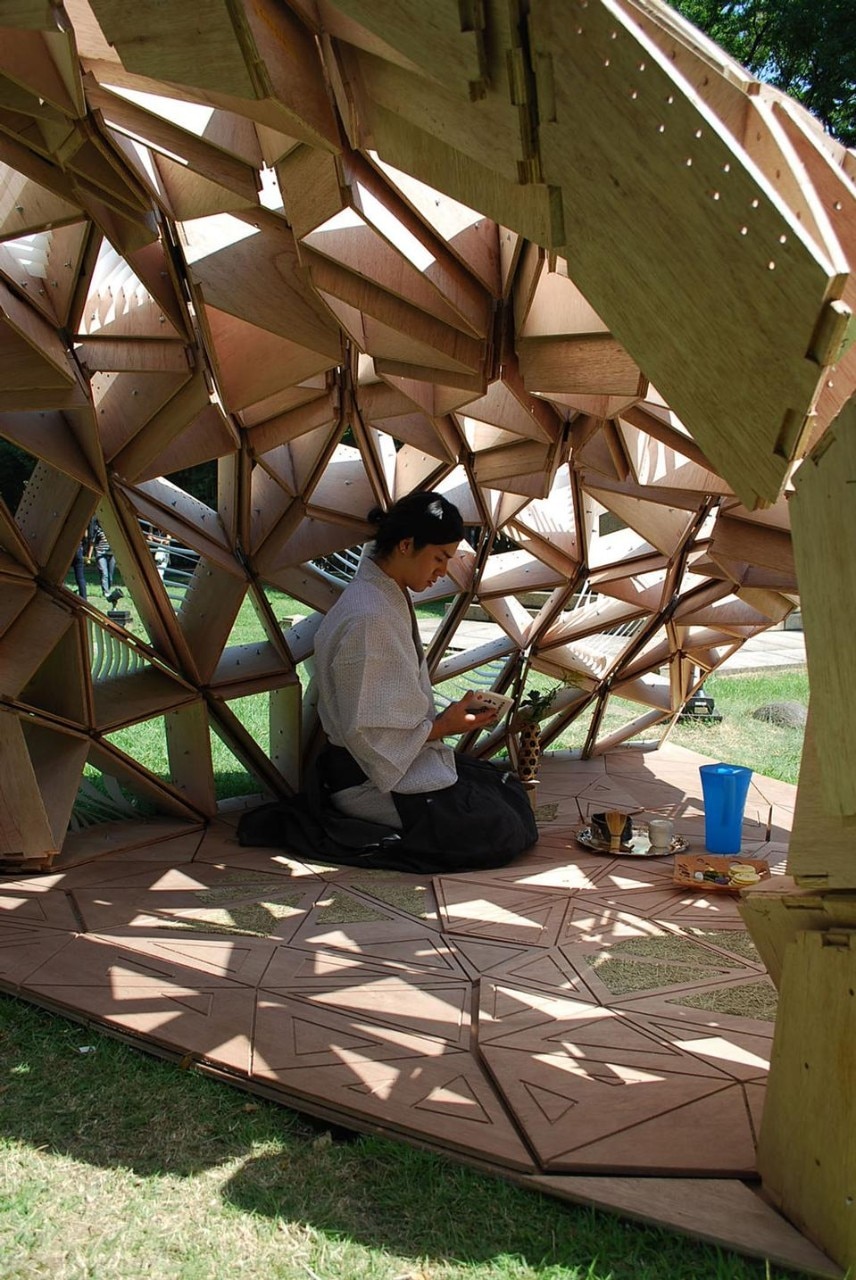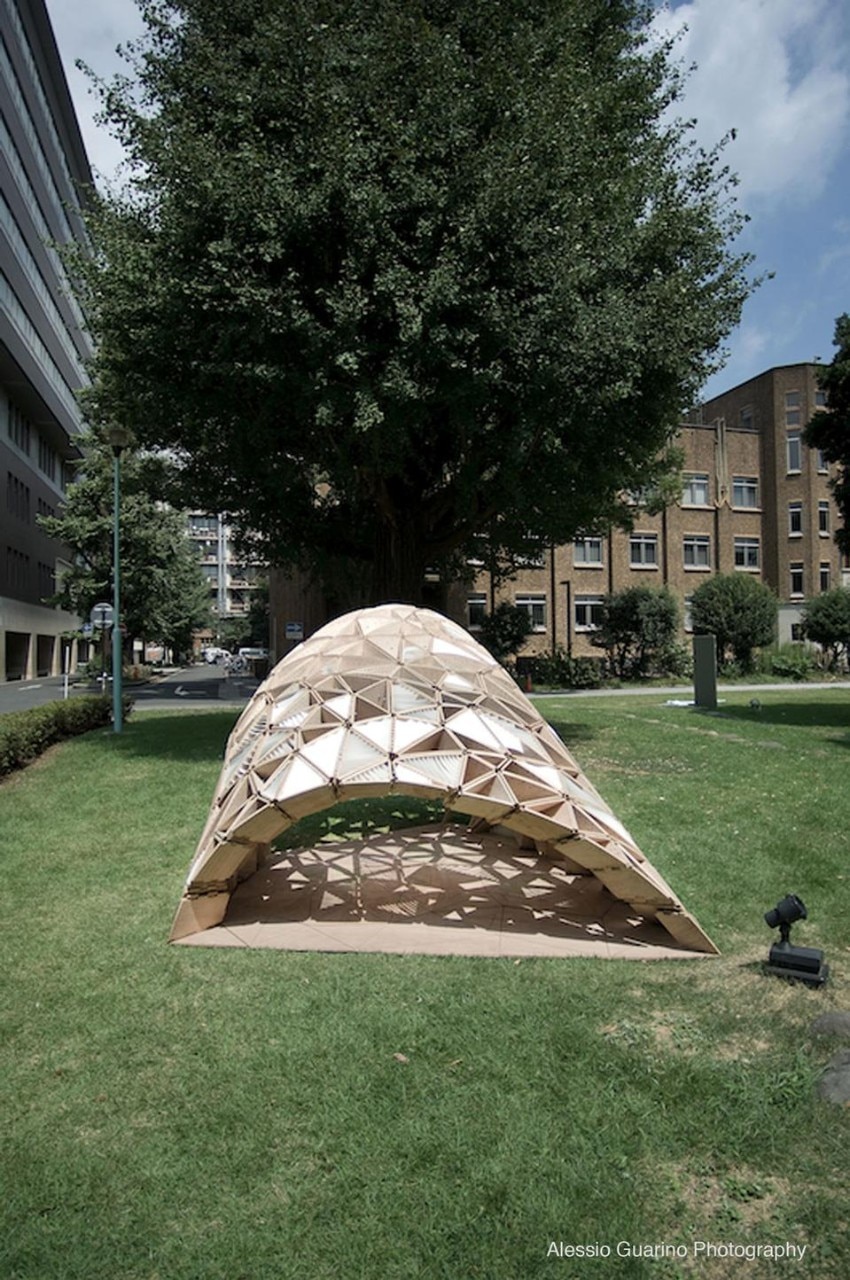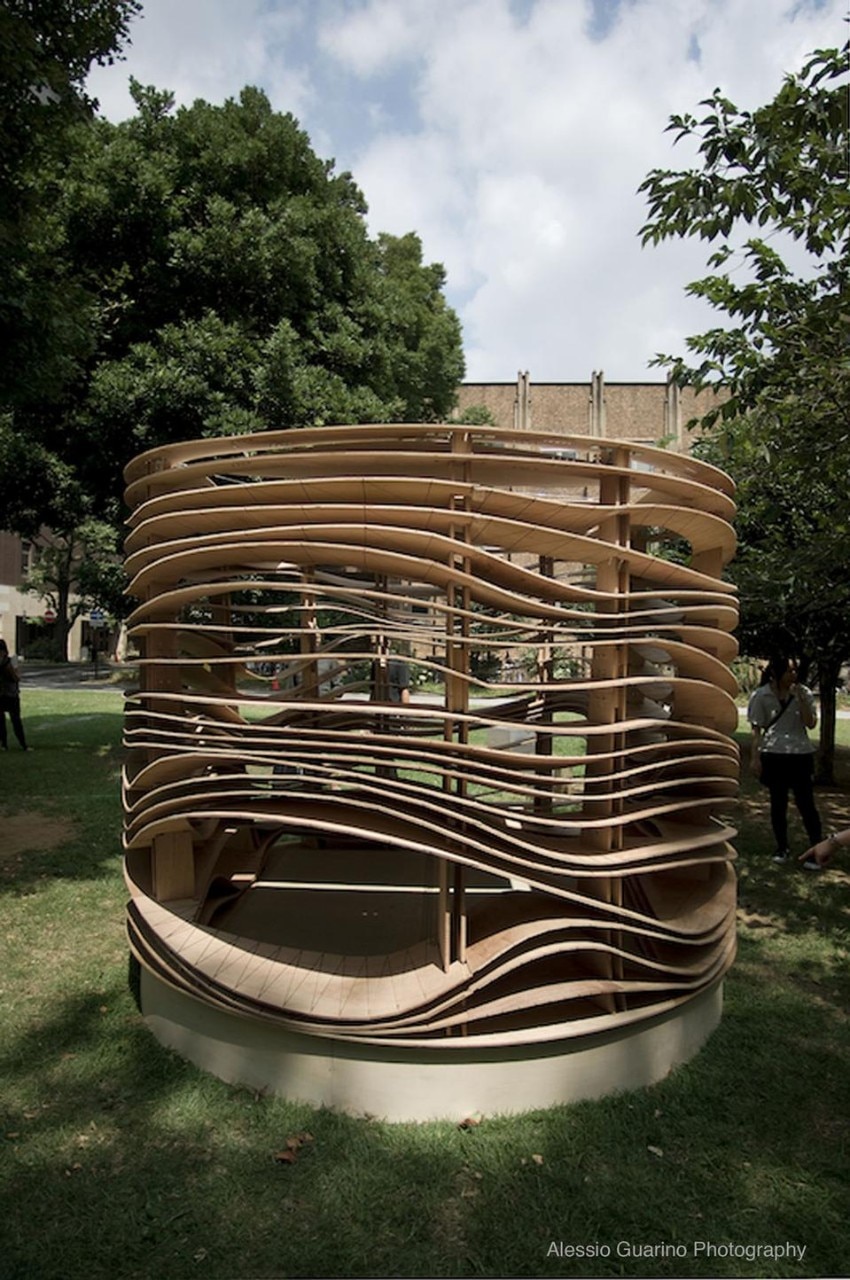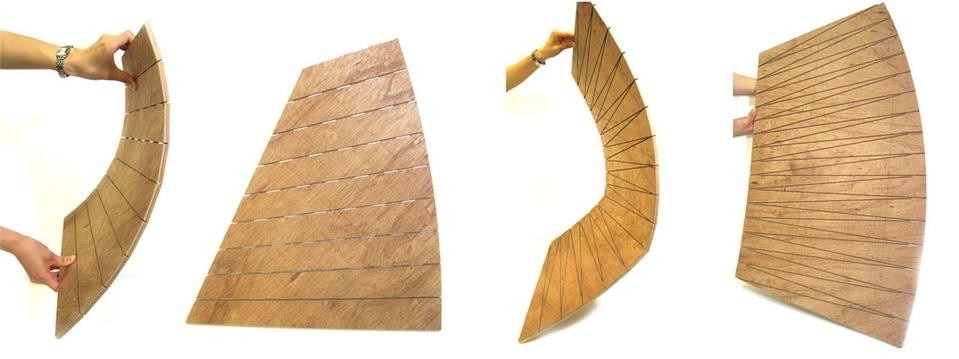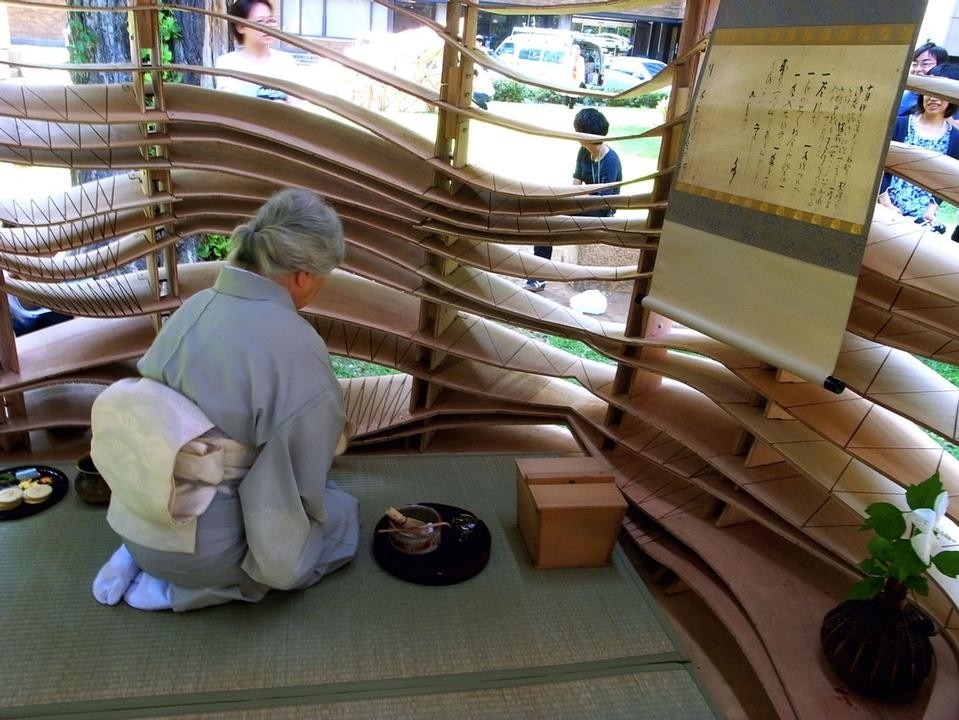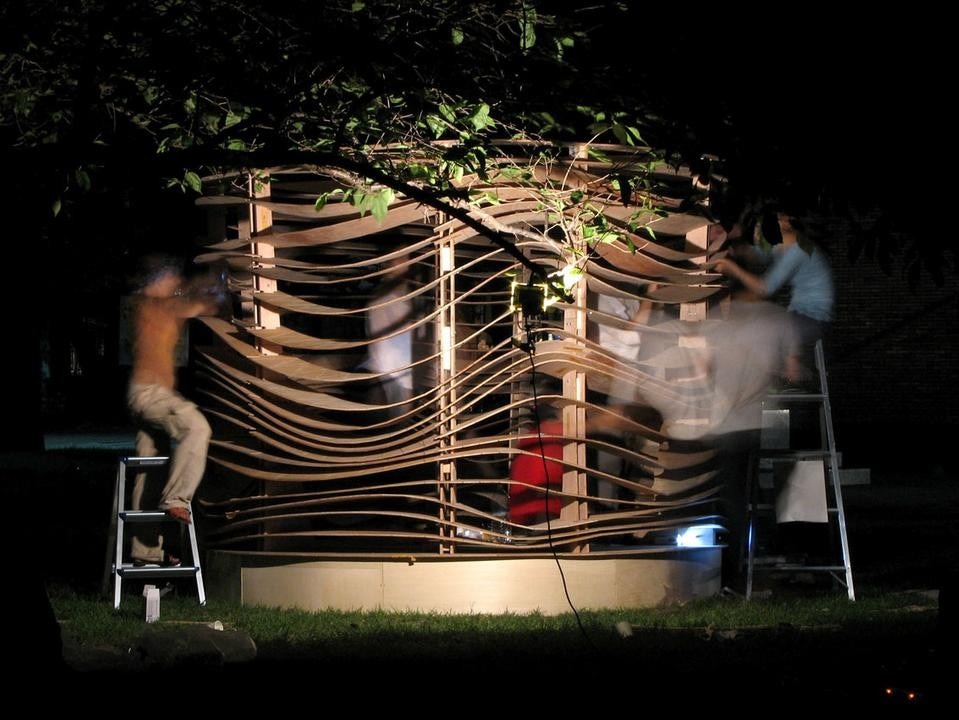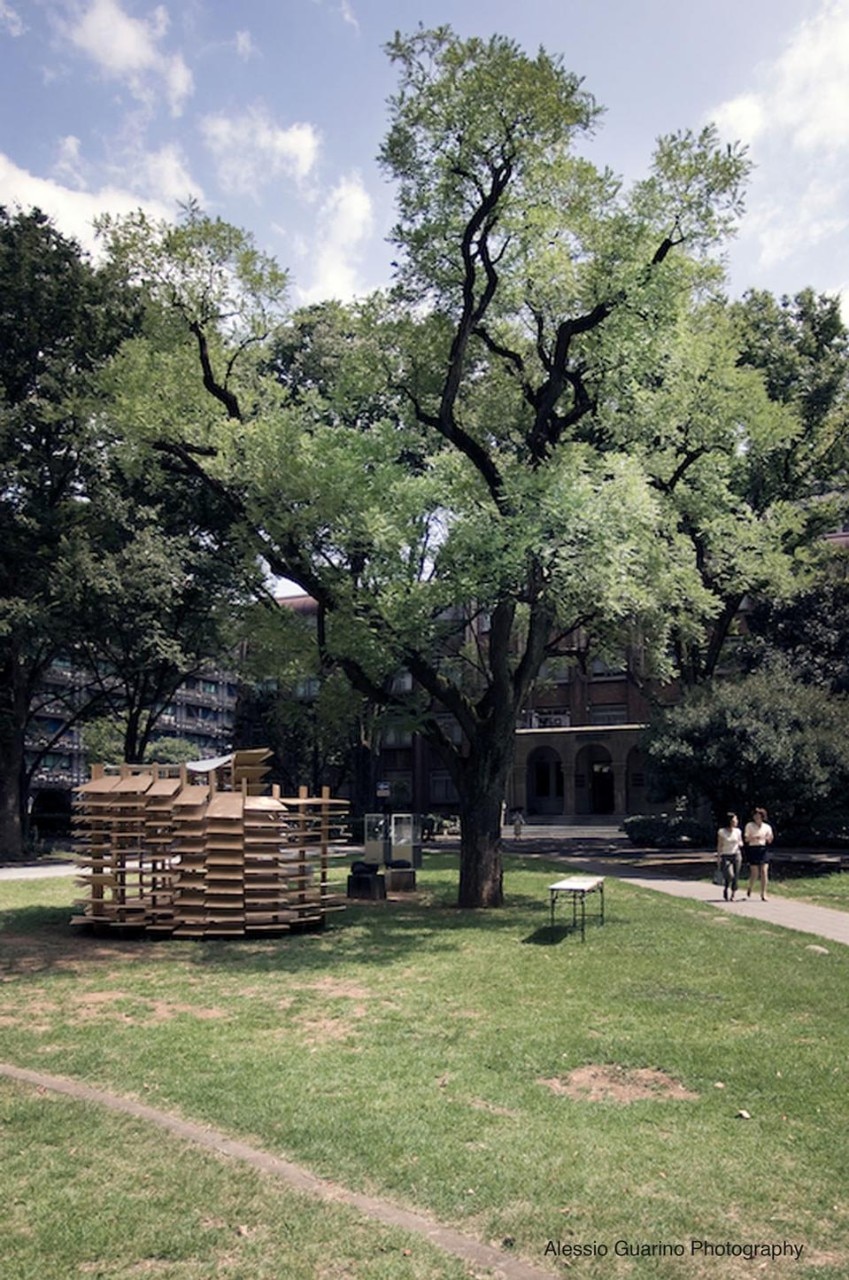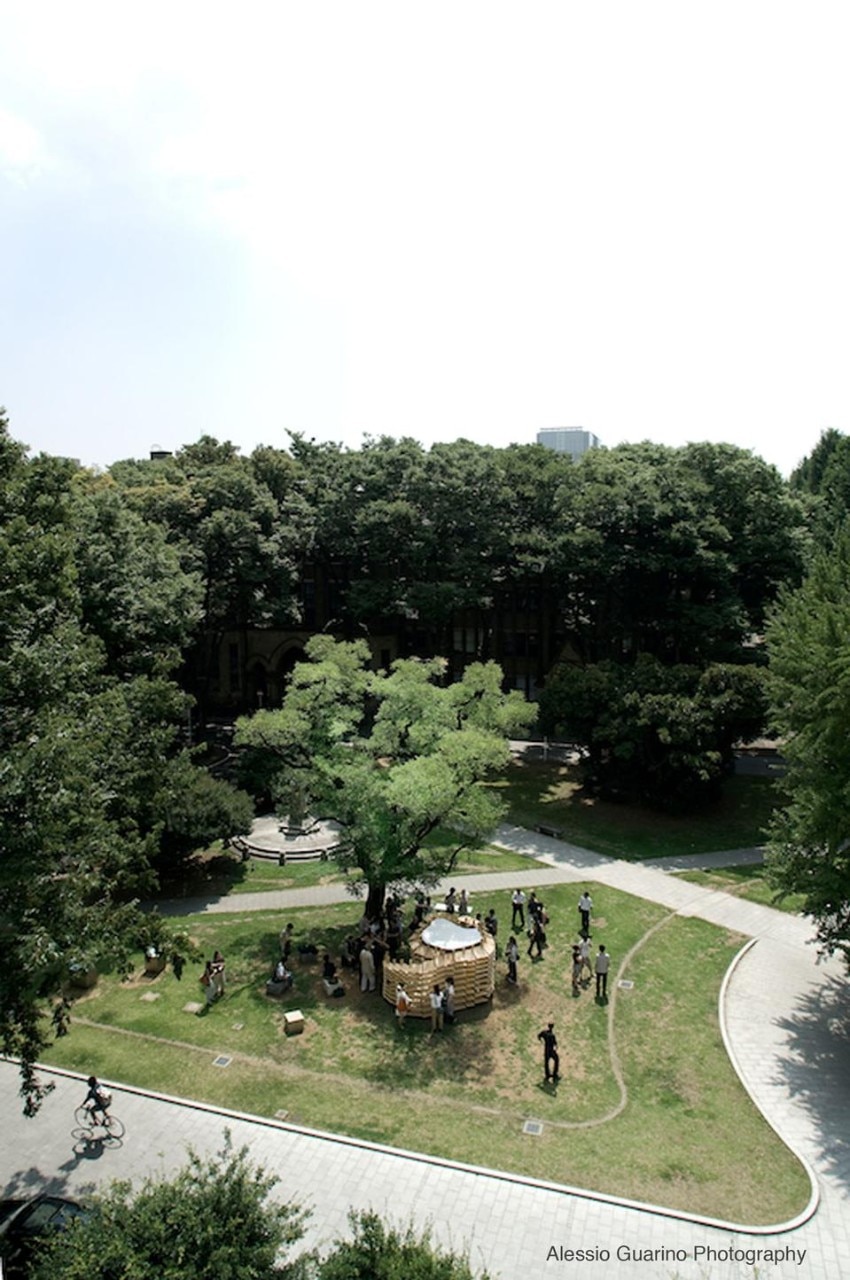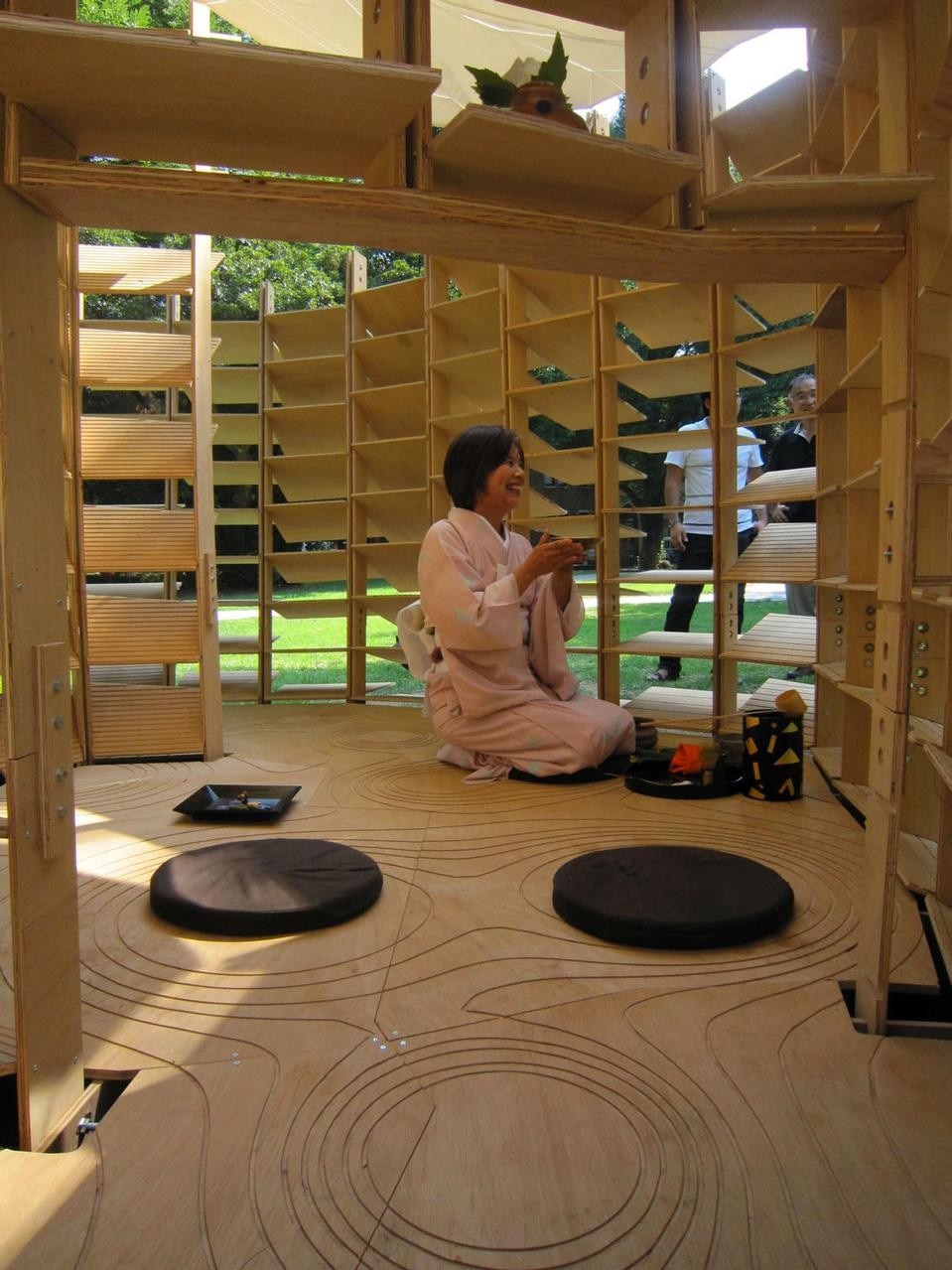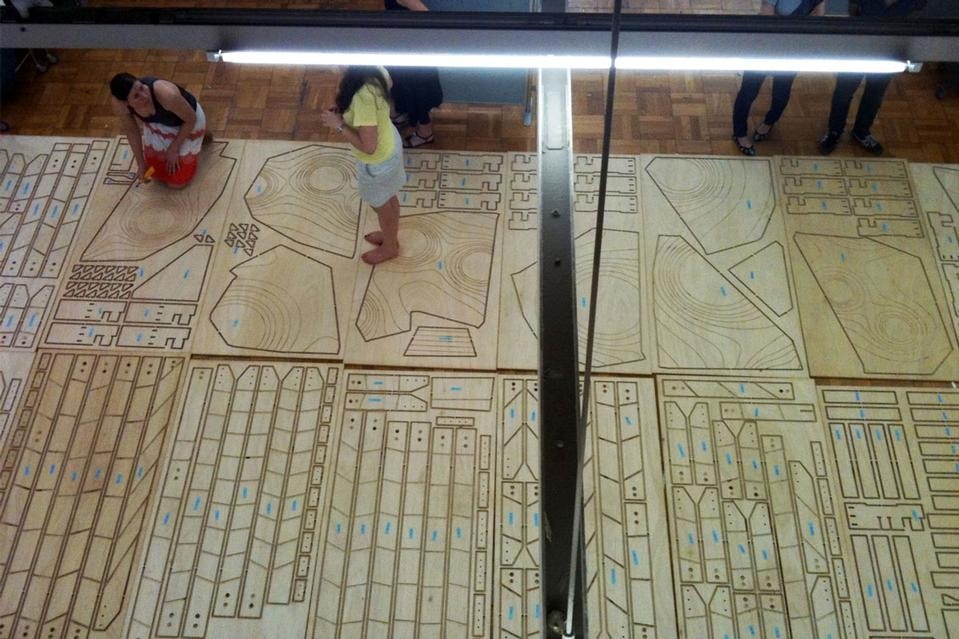The workshop was divided into two parts: the first consisted of a brief, intense study of the logic and meaning of parametric design. The second part concerned the study of the Japanese tea ceremony, its ritual and related implements.
At the end of the workshop the three teams had assembled three tea houses, testing concepts, methodologies and materials that had been developed in the meantime. Even though several preconditions had been imposed, such as the use of specific software (Rhino / Grasshopper), the material to be used (9 and 12 mm plywood), a limited budget (less than 2000 euros), and computer numerical controlled manufacturing methods (CNC three-axis routing), it was surprising to witness the variety of designs and quality of the images expressed by the three teams.
1. The '130008252010' pavilion was designed to perform its function only at a precise, predetermined time: 13:00, 25 August 2010. At that time, the sunlight filtering through the roof, which consisted of a bold but gentle triangular composition, would fall on a similar pattern on the floor. The overlapping of the light and floor pattern lasts only briefly. The effect is quite delicate, bringing to mind the platform at the Katsura Imperial Villa that was designed for observing the full moon in August, which occurs on one night only. When the light unites with the earth, the two guests may drink the tea that has been served to them by the tea master.
2. The second team, called "Waves of Space", took the technical qualities of pressboard to its limits, bending it as far as possible to obtain a curvature effect inspired by the imperfect forms of the cup used during the tea ceremony. The cylindrical pavilion – following the shape of the cup – is dematerialised and is composed of tilted "waves" of plywood that, thanks to incisions made through the numerical controlled machines, create the space of the pavilion.
3. The students from Columbia University used the parametric design process as a pretext to bring elements of the tea ceremony to the project. They created a spatial sequence that takes advantage of the respective entrances and the seats assigned to the tea master and the two guests using them as "focal points and attractors" that, modulated by Grasshopper, shape the tea house according to how they imagine it. Although there is a disconnect between the intention of using rigid geometries and the limited availability of material, everything was controlled and resolved through adjustments made possible by the use of parametric software.
Looking beyond the results that were achieved, it was particularly interesting to note that this global phenomenon of parametric design can also be interpreted through specific, cultural lenses, in the sense that the Japanese sensibility retains its unmistakably unique character even when it is filtered through the use of Rhino and Grasshopper.
Kaon Ko e Salvator-John A. Liotta
Credits
Digital Tea House
Site: Tokyo, Japan, University of Tokyo
Period: August 2010
Universities: University of Tokyo, Department of Architecture Kengo Kuma Lab / Columbia University, GSAPP, Phillip Anzalone, Avery Fabrication Lab.
Professors: Phillip Anzalone, Toru Hasegawa, Brigette Borders (Columbia University).
Yusuke Obuchi, Tachi Tomohiro, Kaon Ko, Salvator-John A. Liotta, Nahoko Yoshii (University of Tokyo).
Keisuke Toyoda, Motoki Yamamoto, Yusuke Oono, Alex Knezo (Noiz Architects)
Students: Team "130008252010": Tan Toon Cheng, David Jenny, Taichi Kuma, Reiko Nishiyama, Shuhei Tanaka, Haruka Tomoeda, Cui Xuan.
Team "Space of Waves": Anna Braverman, Kazami Furukawa, Akinori Hamada, Yuta Ito, Nikola Nikolovski, Hiroyuki Tanaka.
Team "Columbia": Momo Araki, Yuval Borochov, Jordan Carver, Rachel Hillery, Teel Lassiter, Lindsay McClelland, Kristen Munro, Michael Walch
